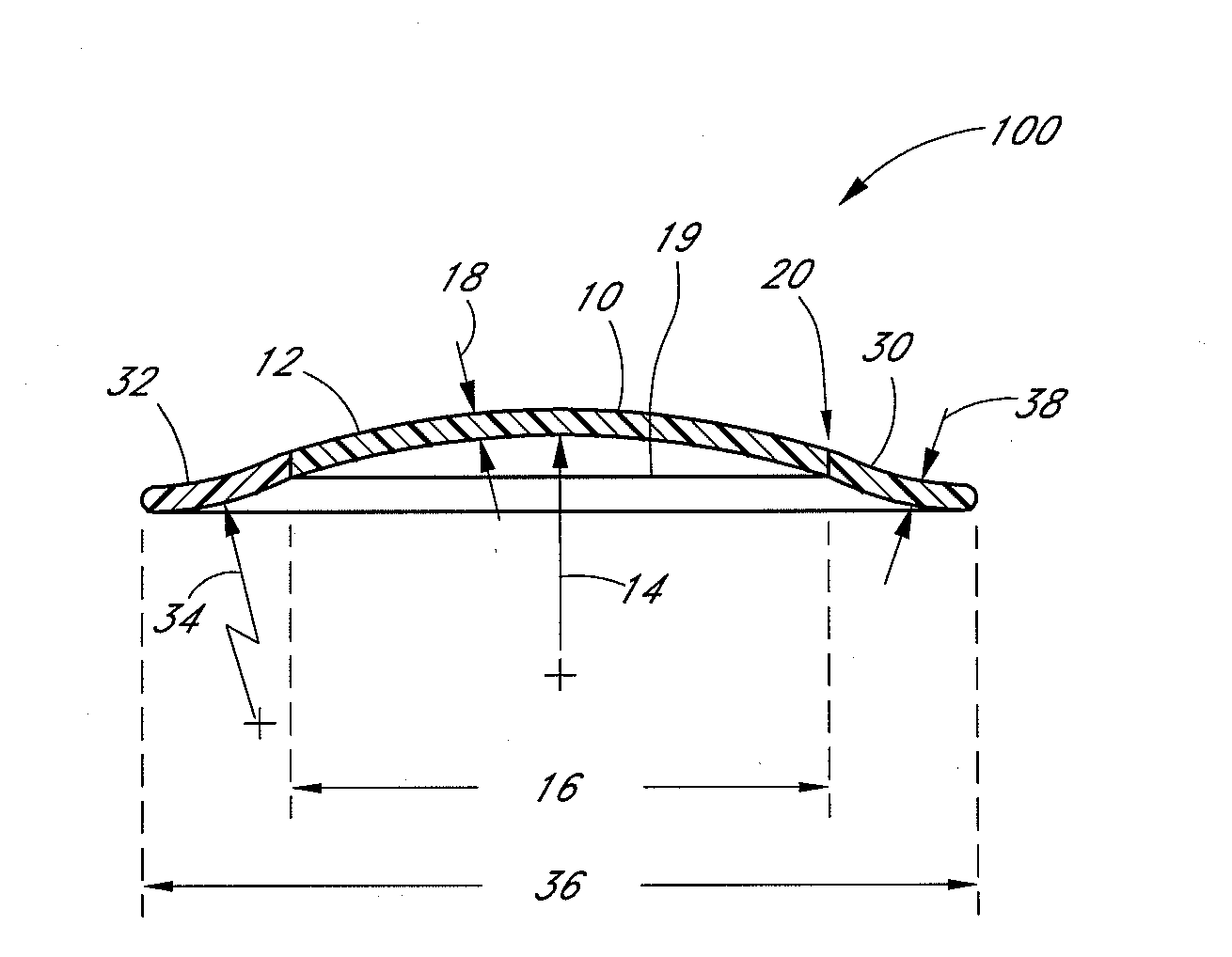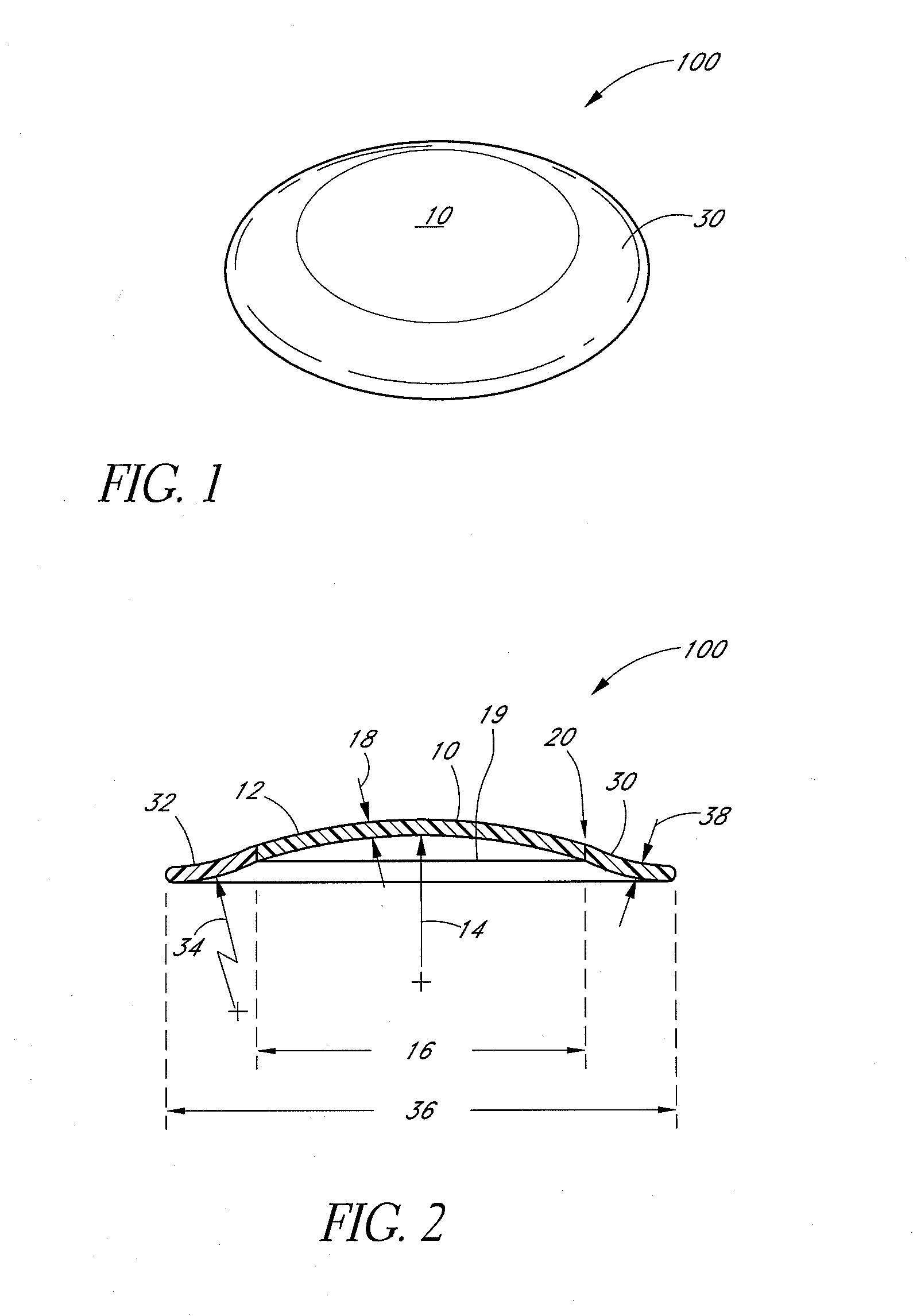Hybrid contact lenses prepared with expansion controlled polymeric materials
a polymer material and contact lens technology, applied in the field of hybrid hard-soft contact lenses, can solve the problems of limited ability to correct vision aberrations, general inability to achieve the effect of reducing the degree of accuracy
- Summary
- Abstract
- Description
- Claims
- Application Information
AI Technical Summary
Benefits of technology
Problems solved by technology
Method used
Image
Examples
Embodiment Construction
[0027]Embodiments of the present disclosure provide xerogel polymer compositions comprising novel diluents which facilitate the manufacture of substantially non-expanding hydrogel polymers for use in applications such as medical devices. These diluents are formulated so as to function as a “stand-in” for water in the xerogel polymer, allowing the xerogel to form and bond to other surfaces in its fully expanded state such that, upon hydration of the xerogel to form a hydrogel, substantially little dimensional change, and thus substantially little distortion in the hydrogel, is achieved. The novel diluents of the present disclosure further preserve the mechanical integrity of the xerogel, allowing the xerogel to be machined to final shape, improving the dimensional tolerances which can be achieved in the hydrogel.
[0028]In the discussion below, the novel diluents are discussed in the context of hybrid contact lenses. It may be understood, however, that hybrid lenses represent only one ...
PUM
| Property | Measurement | Unit |
|---|---|---|
| mol % | aaaaa | aaaaa |
| mol % | aaaaa | aaaaa |
| elastic modulus | aaaaa | aaaaa |
Abstract
Description
Claims
Application Information
 Login to View More
Login to View More - R&D
- Intellectual Property
- Life Sciences
- Materials
- Tech Scout
- Unparalleled Data Quality
- Higher Quality Content
- 60% Fewer Hallucinations
Browse by: Latest US Patents, China's latest patents, Technical Efficacy Thesaurus, Application Domain, Technology Topic, Popular Technical Reports.
© 2025 PatSnap. All rights reserved.Legal|Privacy policy|Modern Slavery Act Transparency Statement|Sitemap|About US| Contact US: help@patsnap.com


